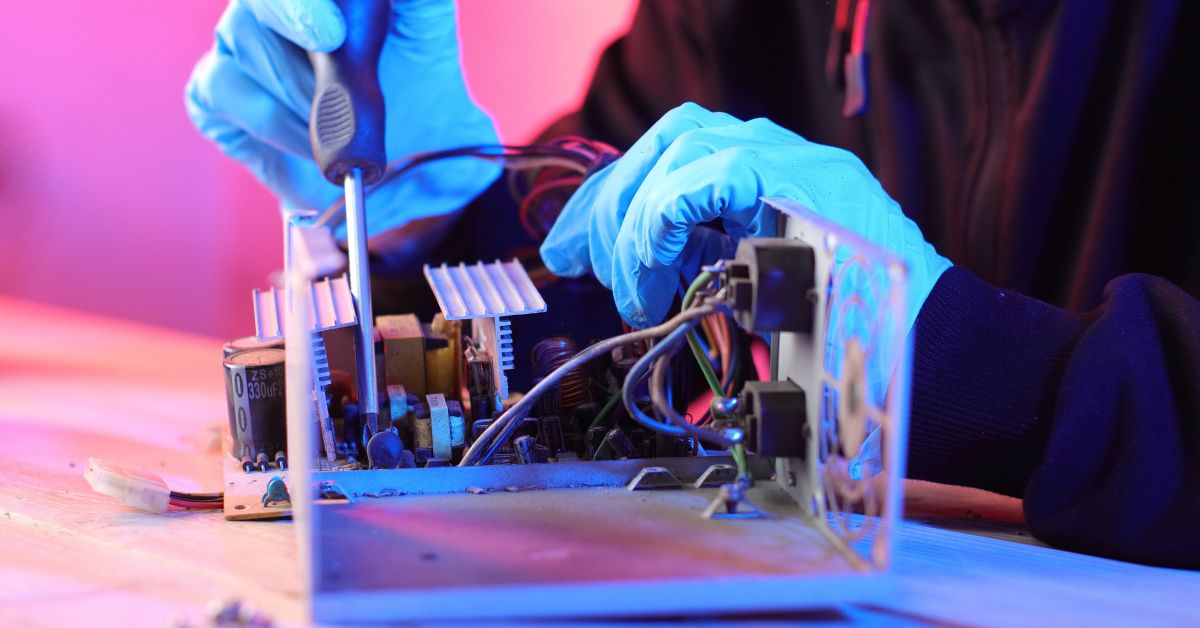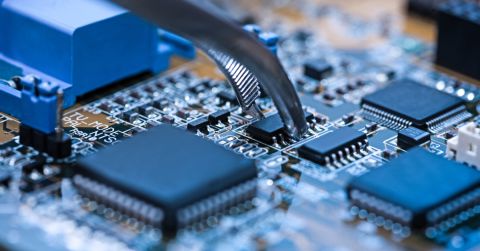7 Top Trends in PMICs Powering Portable Devices

In the world of portable electronics, battery life, thermal control, and board space continue to define what products can deliver. That is why power management integrated circuits (PMICs) are rapidly advancing and driving some of the biggest improvements in performance and usability across mobile, wearable, and connected devices.
Whether you're designing a fitness tracker that runs for weeks or a phone that charges in under ten minutes, the PMIC is central to the experience. Engineers now need smarter regulation with faster switching that reduces power loss while providing precise, real-time control. Semiconductor manufacturers are responding by rethinking what power chips can achieve. Today’s leading PMICs leverage advanced regulation that is enhanced by artificial intelligence and new materials such as gallium nitride (GaN) to meet these new design demands.
Here are seven key trends shaping state-of-the-art PMICs and guiding engineering decisions in portable product development.
1. Higher Integration in Smaller Packages
Modern PMICs combine multiple power functions within a single chip, including DC-DC converters, low-dropout (LDO) regulators, load switches, battery charging, and monitoring. These compact devices simplify the power system and save valuable board space.
For compact devices such as wearables, this level of integration supports tighter layouts and streamlined assembly. Renesas' DA9070 integrates a linear charger, buck regulator, boost converter, LDOs, and fuel gauge in a 3×3-millimeter package. Nordic's nPM1304 includes two ultra-efficient buck converters, two LDOs, five GPIOs, 3 LED drivers, load switches, a linear charger, and battery fuel gauging with automatic thermal regulation.
Consolidating power management functions into fewer components helps engineers reduce part counts, improve thermal behavior, and accelerate time to market. High-complexity systems, such as smartphones and tablets, benefit from PMICs that support dozens of voltage rails and control coordinated power sequencing through digital interfaces.
2. AI-Based Power Management
Artificial intelligence is becoming part of the power design conversation. PMICs now support predictive power control based on system activity, user behavior, and environmental conditions.
Some designs include AI-assisted firmware or external inference engines that anticipate power demands and adjust voltage rails ahead of workload changes. Others help implement adaptive charging strategies, such as pausing or slowing the charge cycle when the system is inactive for extended periods. Power systems from Qualcomm and Apple already use this approach to improve long-term battery health.
Expect more PMICs to offer dynamic load tracking, real-time energy profiling, and intelligent diagnostics. These capabilities allow devices to operate efficiently while supporting performance requirements across changing usage conditions.
3. GaN Reaches Portable Applications
Gallium nitride (GaN) offers high breakdown voltage, low on-resistance, and fast switching, making it well-suited for high-density power conversion. What began in external power adapters is now reaching the devices themselves.
GaN-based PMICs, like Qorvo’s ACT43750, achieve higher current delivery with less heat, which is especially important for phones with fast-charging capabilities and compact AR or gaming devices with demanding processors and displays. Infineon, Navitas, and other vendors are expanding GaN use within mobile and portable platforms.
With GaN, engineers can use smaller inductors and passive components, reduce board space, and improve thermal margins. These advantages help make compact, high-performance electronics more efficient and responsive.
4. Fast Charging Features Get Smarter
PMICs that manage high currents, protect the battery, and limit heat generation can meet the consumer demand for faster charging and shorter downtime. Advanced PMICs that support multi-cell battery configurations allow systems to divide charge current across multiple cells. This approach reduces stress on each cell and minimizes hot spots. With this method, charge pumps and high-efficiency buck converters are used instead of linear methods to avoid thermal overload.
PMICs such as Qualcomm’s SMB1396 integrate programmable charging profiles and active power-path control. They also communicate with USB PD sources in real time to optimize voltage levels. Systems using this approach can recharge to fifty percent capacity in minutes while preserving battery health.
5. Designs That Account for Heat
Thermal behavior is becoming a primary design factor. Today’s PMICs address heat with a combination of architectural choices, advanced control features, and packaging improvements.
Many devices now use power-path management to direct energy between the battery and system load based on usage and temperature. This reduces conversion losses and helps balance power draw to avoid spikes. PMICs with embedded thermal sensors can automatically adjust regulator behavior to maintain safe operating conditions.
Improved packaging, such as flip-chip ball grid arrays and thermally conductive substrates, reduces junction temperatures and supports higher output power. For mobile and wearable systems, these refinements allow engineers to maintain performance without compromising comfort or safety.
6. Reduced Standby Power
Wearables, hearables, and low-power IoT devices benefit from PMICs with extremely low quiescent current. Reducing baseline power consumption increases runtime and shelf life, especially in products that remain idle for long periods. New regulators operate at sub-microamp levels, with some designs drawing less than 1 microamp in sleep mode. Pulse-frequency modulation, dynamic power gating, and ultra-low-leakage circuits all contribute to improved standby efficiency.
Products like TI’s TPS63802 and Renesas’ DA9070 offer excellent efficiency across a wide range of load currents, providing designers with balanced responsiveness and long-term battery life. These PMICs also support features such as ship mode, which further limits drain during storage or shipping.
7. Embedded Intelligence and Telemetry
PMICs now support power monitoring, telemetry, and fine-grained control through digital interfaces. This embedded intelligence helps engineers optimize performance and identify inefficiencies or potential faults.
Advanced PMICs integrate fuel gauges, analog-to-digital converters, programmable thresholds, and fault logging. These features allow the system to report real-time power usage and adjust operation based on context. In medical and mission-critical products, diagnostics and analytics at the power level support predictive maintenance and higher reliability.
Digital control interfaces, such as I²C or SPI, enable host processors to dynamically manage PMIC behavior. Engineers can adjust voltage levels, monitor system states, and control sequencing from software, allowing rapid adaptation to new operating conditions.
Power Management as a Strategic Design Layer
PMIC innovation is reshaping portable product design. Integration, AI-driven control, and GaN materials are giving engineers greater efficiency, smaller footprints, and more responsive power delivery, all while enabling features like fast charging, intelligent diagnostics, and ultra-low standby consumption. These advances are becoming baseline expectations for everything from wearables to high-performance mobile devices.
Sourcing the right PMICs is as important as how you design around them. Octopart helps engineers search millions of electronic components, compare options from leading manufacturers, and verify pricing and availability from hundreds of distributors in seconds. The Octopart BOM Tool streamlines procurement by analyzing your entire bill of materials, flagging supply risks, and suggesting suitable alternates before risks impact production, and much more. Try it with your next project and you’ll wonder how you ever managed without it.










 Back
Back